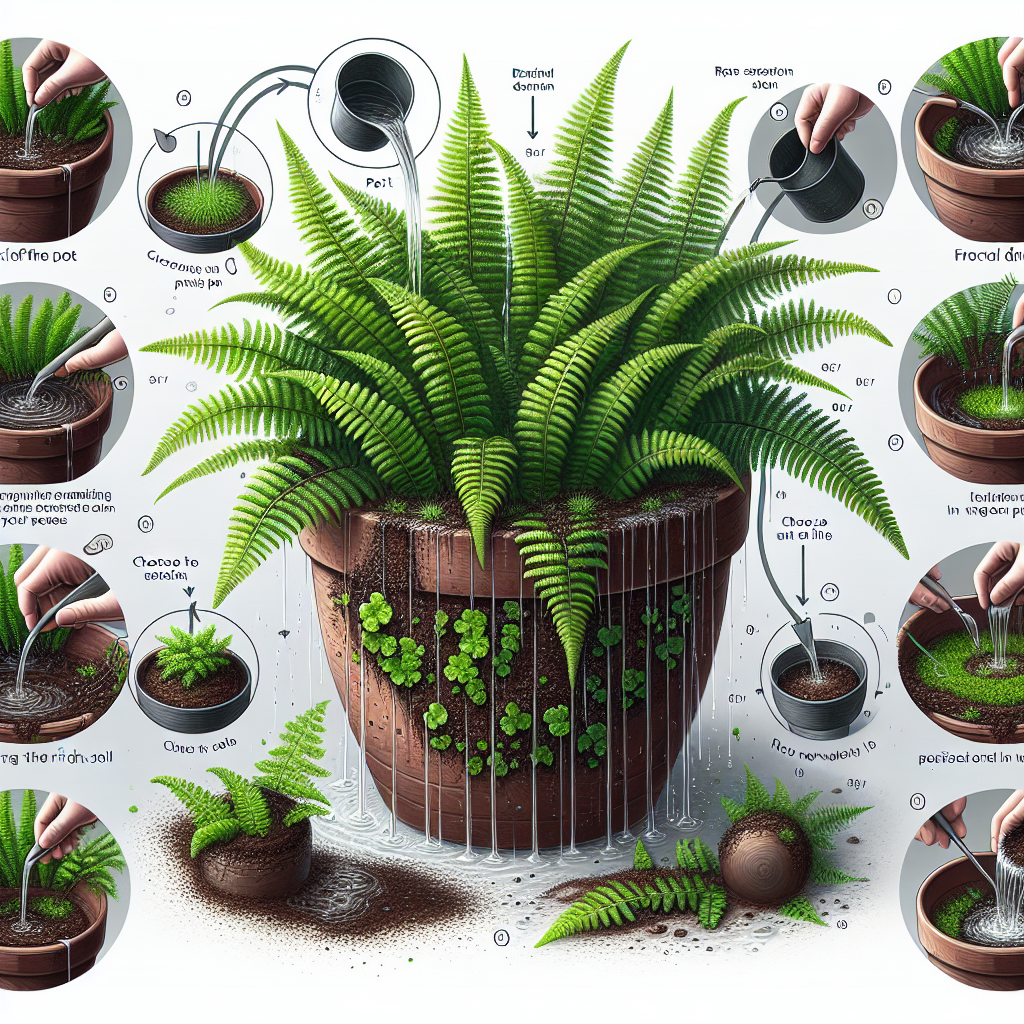Ferns are beautiful and delicate plants that can add a touch of elegance to any space. They are popular choices for indoor and outdoor gardens due to their lush foliage and unique textures. However, growing ferns in pots require special attention to ensure proper drainage, as they are particularly susceptible to root rot when exposed to excess water. In this article, we will discuss how you can maintain proper drainage when growing ferns in pots.
1. Choosing the Right Pot
The first step in maintaining proper drainage for your ferns is selecting the right pot. Opt for a container with drain holes at the bottom to allow excess water to escape easily. Avoid using pots without drainage holes, as this can lead to waterlogged soil and root rot. Additionally, choose a pot that is slightly larger than the current size of your fern to allow room for growth.
2. Use the Correct Soil
Ferns thrive in well-draining soil that retains moisture without becoming waterlogged. A good potting mix for ferns should be lightweight and contain organic matter such as peat moss or coconut coir to retain moisture. Avoid using heavy soils such as clay or garden soil, as these can retain too much water and lead to root rot.
3. Ensure Proper Drainage
In addition to choosing the right pot and soil, you can improve drainage by adding a layer of gravel or pebbles at the bottom of the pot before adding soil. This will create a space for excess water to collect without saturating the roots of your fern. Additionally, consider using a saucer or tray under the pot to catch any excess water that drains out.
4. Watering Carefully
One of the most important factors in maintaining proper drainage for your ferns is watering carefully. Overwatering is a common mistake that can lead to root rot and other issues. Allow the top inch of soil to dry out before watering your fern again, and always check the moisture level in the soil before adding more water.
5. Monitor Humidity Levels
Ferns require high humidity levels to thrive, but excessive moisture can lead to problems with drainage. To maintain proper humidity levels for your ferns, consider using a humidifier or placing a tray of water near your plants. Avoid misting your fern leaves directly, as this can create excess moisture that could contribute to root rot.
6. Fertilize Wisely
Fertilizing your ferns is essential for promoting healthy growth, but it’s essential not to overdo it. Excessive fertilizer can build up in the soil and disrupt drainage, leading to nutrient imbalances and other issues. Use a balanced liquid fertilizer diluted at half strength once a month during the growing season.
7 .Prune Regularly
Regular pruning is crucial not only for maintaining proper shape but also for improving air circulation around your ferns’ roots which helps prevent moisture buildup around them.
In conclusion growing Ferns in pots requires special care when it comes to maintaining proper drainage otherwise they may become prone illnesses like root rot from being exposed too much water which they don’t tolerate well due being delicate plants If you follow these tips carefully you will be able enjoy beautiful healthy Fern plants thriving happily indoors or outdoors all year round .













